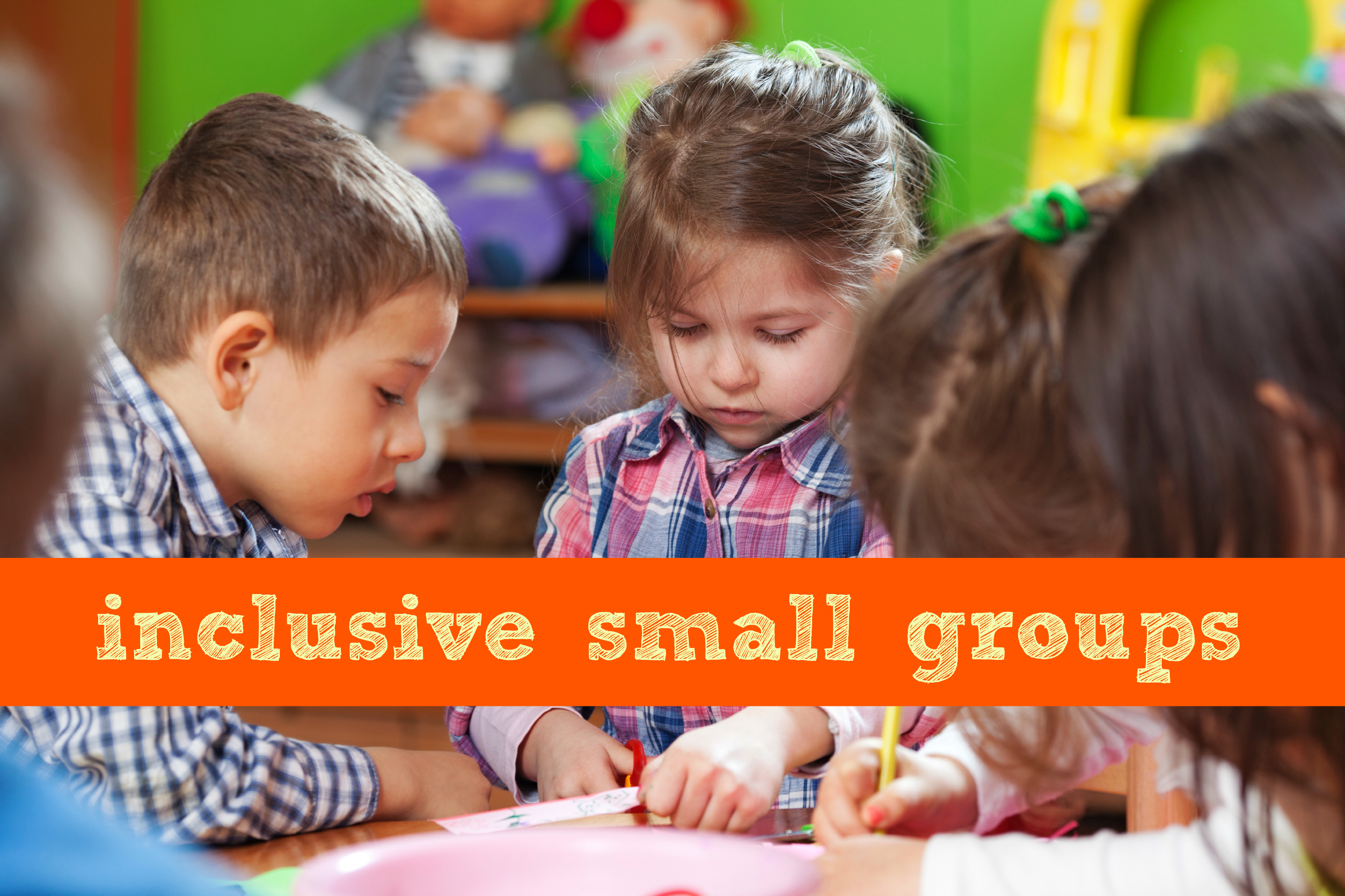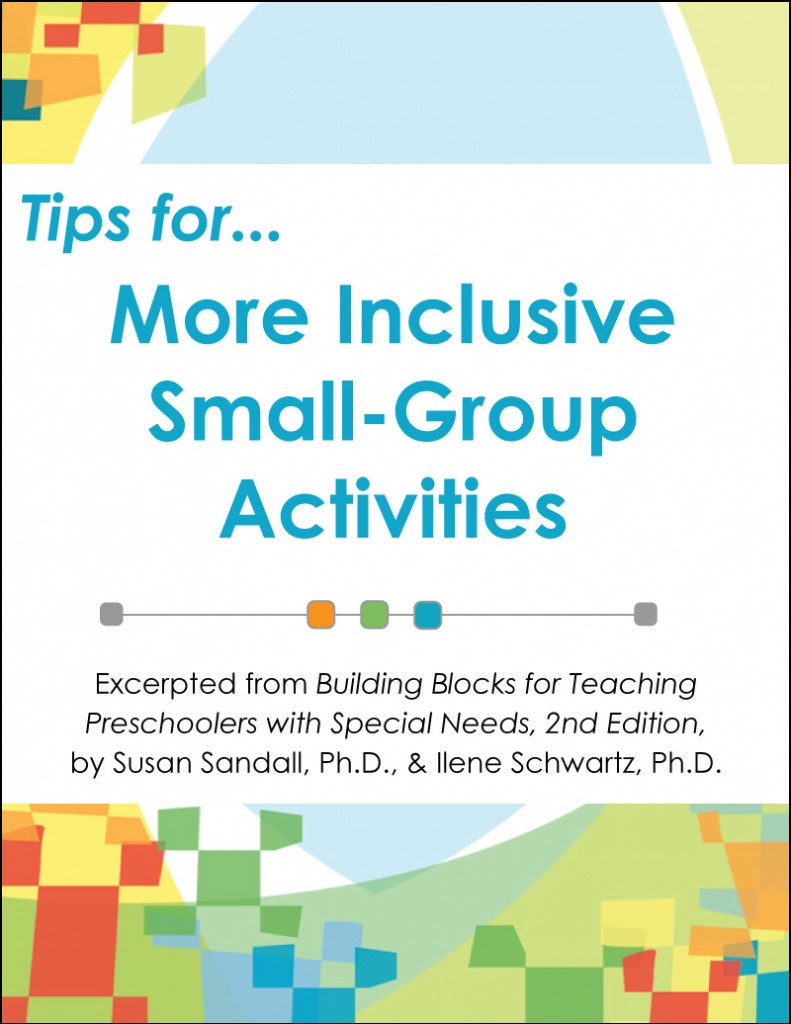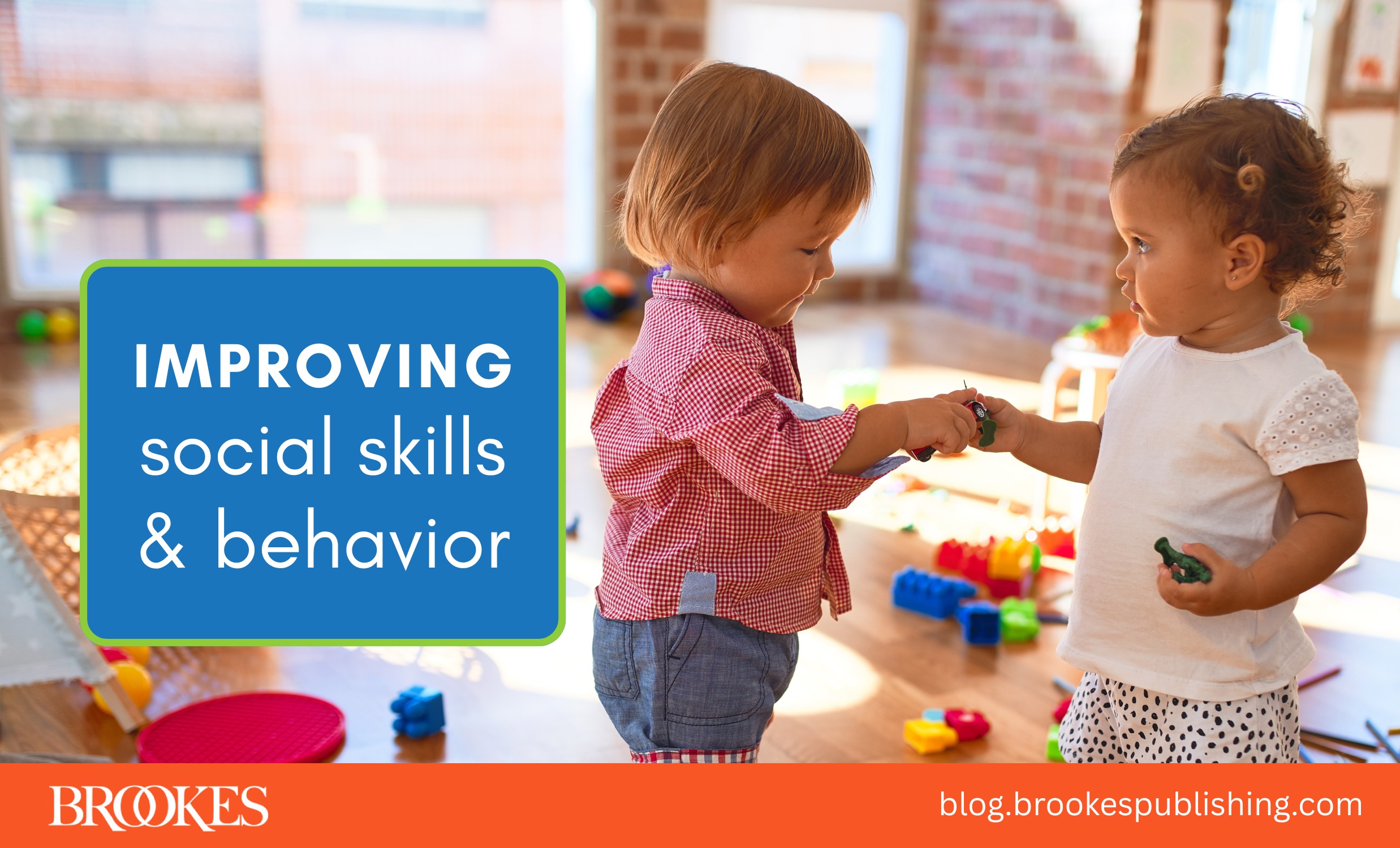8 Ways to Make Your Small-Group Activities More Inclusive
May 7, 2015
(*See the end of this post for a FREE printable with even more small-group inclusion tips!)
Small-group activities are packed with so many benefits, they’re like a mega-vitamin for your preschool classroom. Those little 15-minute pockets of time are rich with opportunities to:
- Promote your students’ cooperation and communication skills
- Provide customized instructional support for students who need extra help
- Encourage friendships and interactions among kids who don’t normally play together
- Focus on just a few children at a time, so you can observe them closely and assess their skills and needs

Your challenge, as an inclusive educator: Make sure all students participate in—and benefit from—small-group instruction time. When you’re teaching kids with a wide variety of learning styles, special needs, and temperaments, meeting everyone’s individual needs can feel a little overwhelming. Fortunately, you don’t need a magic wand in your bag—just a few supports and adaptations can make a big difference.
Here are eight common challenges to student participation in small groups, and some easy tricks you can try to make these activities more inclusive. (These tips are adapted from Building Blocks for Teaching Preschoolers with Special Needs.)
Challenge #1: Kayla tends to grab things from other kids during small-group projects.
Tip: Try this environmental support: Add more physical structure to the activity by putting Kayla’s project on a plastic tray or in a cardboard box lid. If she has a concrete reminder of which items are hers, it might minimize her impulse to grab items from other children.
Challenge #2: Miguel has difficulty transitioning to small-group time.
Tip: Here’s another environmental support: try assigning seats at each small-group table. Post each child’s name on the table or on his or her chair, or give each child a name card to take to small-group time. If Miguel knows exactly where he needs to sit at small-group time, it might reduce his transition anxiety. (Namecards could help resolve general transition chaos for your whole class, too.)
Challenge #3: Emma isn’t willing to go to small-group activities. I just can’t get her to participate.
Tip: Does Emma have a special interest or a favorite item she often takes to school with her? Consider bringing it into the activity to spark her interest. For example, if she loves trains, have her run a toy train through paint to create her masterpiece instead of using a paintbrush.
Challenge #4: Amir wants to participate, but the table is too high for him, and he has trouble holding a pencil.
Tip: Your students’ physical differences can often be accommodated with just a few simple, inexpensive materials adaptations. In Amir’s case, you could try attaching a foam board or cushion to his seat with Velcro or tape so he can reach the table. And wrapping a pencil with tape will make it bigger and easier for him to hold.
Challenge #5: Gina has fine motor difficulties, so she gets very frustrated during some small-group activities. When she’s stringing beads, for example, they keep falling out of her hands when she tries to hold the string in one hand and the bead in the other hand.
Tip: Here’s a solution that strengthens social skills and relationships, too: Pair Gina with another child at the small-group table. Ask the partner to hold the beads for Gina so she can focus on putting the string through the beads–or, for extra social skills practice, ask the pair to figure out who will do which part of the task. Peer supports are a great way to help kids on both sides of the partnership learn new skills.
Challenge #6: The class loves to do puzzles and games during small-group time. Eli gets overwhelmed by activities with a lot of small pieces.
Tip: You can simplify a more complex activity by breaking it into smaller parts or reducing the number of steps. If you’re doing puzzles with Eli’s group, try handing the pieces to him one by one, or present him with a completed puzzle with just a few pieces missing. If he becomes more comfortable with the task, you can gradually increase the number of the pieces taken out.
Challenge #7: Shara seems to be confused by the steps involved in cutting and pasting. She’s not sure where to start and becomes frustrated after a few minutes.
Tip: A little extra adult support might be appropriate here. Have an adult—whether that’s you, a teacher’s aide, or a parent helper—sit beside Shara and show her how to cut out a shape and glue it to the paper. Try showing her the steps without telling her directly, so she can learn by observing.
Challenge #8: Henry rushes through small-group activities and then wants to leave as soon as it’s over. Sometimes he wants to leave before the project is even finished!
Tip: For a child who can’t wait to get up and go, use his natural preferences and motivations to help him stay put until small-group time is over. Take a cardboard box or bin and create a colorful “finished box.” Put motivating items inside the box—Henry’s favorite classroom toy or book, for example—that he can use only after he finishes small-group time and stays at the table.
What do you think—will you try any of these tips in your classroom? What else can teachers do to make a small-group activity more inclusive? Add your favorite idea for small-group success below!
FREE DOWNLOAD
Like these ideas? Print them now for easy reference (along with some bonus tips + space for your own ideas!)





Write a Comment
Your email address will not be published. Required fields are marked *
comments
Joseph Schlag says
Great creative problem solving ideas for small group issues that often arise.
Post a Comment